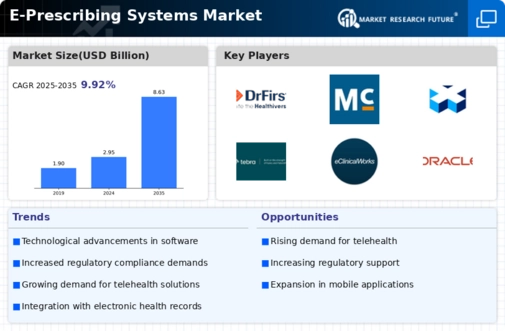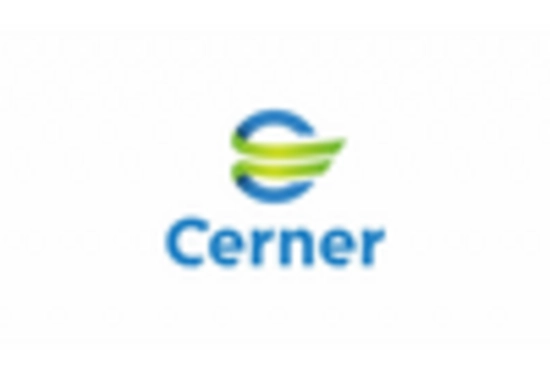Market Share
E-Prescribing Systems Market Share Analysis
Electronic prescribing system companies appreciate pharmacy network collaboration. Successful providers make their systems compatible with many pharmacists. This allows doctors to send orders to the patient's chosen pharmacy online, speeding up prescription fulfillment. EHR integration is crucial for market positioning. Electronic health record-compatible e-prescribing solutions help keep patient records complete. This simplifies patient prescription monitoring and improves healthcare organization. Businesses stress the need of electronic prescribing systems having accurate, up-to-date prescription listings. To help doctors choose prescriptions, they must update the system with the latest drug, dose, and combination information. To stand out in the professional market, providers must embrace clinical decision support technology. E-prescribing technologies let doctors make safer, more educated medication combinations, dose modifications, and allergic reaction choices. For broad adoption, electronic prescription needs easy-to-use technologies for doctors. Businesses invest on user-friendly designs and efficient processes. This reduces medical entry mistakes, and the program is easy to incorporate into healthcare practitioners' practices. Successful market participants invest in patient engagement. Electronic prescribing systems that provide tools for taking medications as prescribed, prescription notifications, and educational materials give patients more control over their health care, which improves health outcomes over time. Businesses provide mobile e-prescribing because they know people need to be autonomous. This allows medical practitioners to deliver prescriptions on the fly, making them more flexible and responsive to healthcare needs. Patient health data is sensitive, hence strict security measures are needed. E-prescribing solutions protect patient data with access controls, improved security, and compliance with healthcare data protection laws. Businesses prioritize health plan and medication formulary integration. Electronic prescribing systems that supply doctors with pharmaceutical formularies and insurance coverage may help them write cost-effective, insurer-covered prescriptions. Businesses provide ongoing training and support because they know users need the right skills. These classes help healthcare practitioners stay updated on electronic prescription systems. This assures proper system utilization and minimum prescription mistakes. Businesses market their electronic prescribing solutions as important to telehealth services because telemedicine is rising in importance. This contains capabilities that simplify remote prescription writing during video sessions. This streamlines the prescription process. Scalability is crucial to market positioning. Companies provide computerized prescribing systems that may be customized for office and hospital environments. This makes them versatile and appealing to a wide range of clientele. Businesses seek permits and rules to meet their requirements. Electronic prescription systems gain market credibility by following EPCS rules. Addressing cost concerns is a common market strategy. Some companies provide inexpensive and useful electronic prescription options to make the technology more accessible to healthcare practitioners. Market leaders penetrate new areas and expand in current ones to grow their consumer base. To expand the market, one must grasp local healthcare needs and legal regulations, as well as how to modify electronic prescription systems to meet worldwide standards.

















Leave a Comment